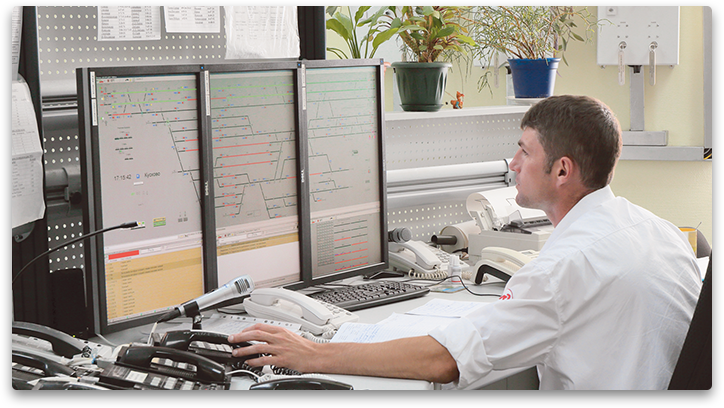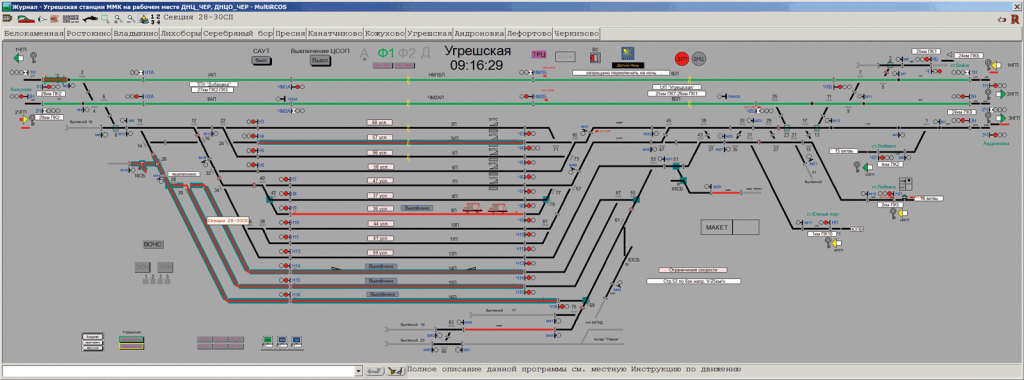-
Technological scalability and hot standby – separate modules of the system can operate on geographically distributed nodes in hot standby.
-
The ergonomic user interface allows meeting the needs of any market/country.
-
Dynamic support of multilingual capability (ability to switch languages of the user interface without having to restart the system).
- Support of distributed database that is controlled by users (alarms on the station mnemonic scheme and a list of installed brake shoes).
- Support of automatons — transmission of command execution request from one automated workstation of the system to another.
-
Station database update in the background without interruptions of the system operation.
- All events are protocoled and can be played back. There is a search engine and an event filter.
-
Support of fully dynamic objects (trains) with a possibility to display them in connection with their physical coordinates.
-
The database is stored in a text format (XML) that allows using different available tools of revision control and source code versions during development and testing.
-
Interface with different train control systems ATP, CTC, CTC “Dialog”, “Setun”, “Yug” Automatic Diagnostic Complex –signals and interlocking, hardware-software complex of CTC, automated dispatch control system, line point data transmission system -6, the Moscow Metro CTC, PKSS, Technical diagnostic system – Automatic locking and level crossing safety system, and position monitoring system. Each interface is made as a separate client module of the system and supports hot standby mode.

